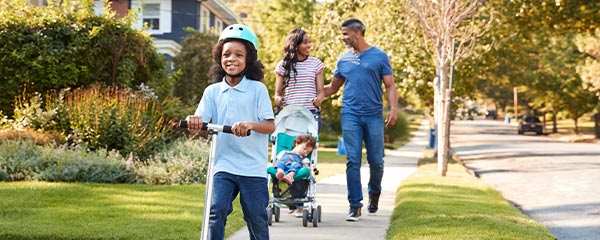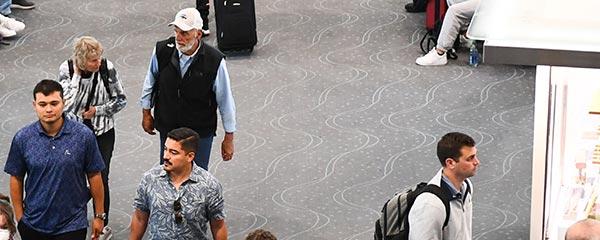Story Highlights
- 5% are completely and 13% mostly isolating themselves from nonhousehold members
- Majority report that their socializing is completely back to normal
- Entertainment and travel suffering most in people's reports of normalcy
WASHINGTON, D.C. -- Fewer than one in five Americans (18%) now say they are completely or mostly isolating themselves from nonhousehold members, a marker of strict social distancing that peaked at 75% near the onset of the pandemic last April. More recently, the rate was 22% in May and has fallen by half since March, when it was 38%.
Conversely, almost half of Americans, 47%, now say they made no attempt whatsoever to isolate themselves from nonhousehold members in the past day.
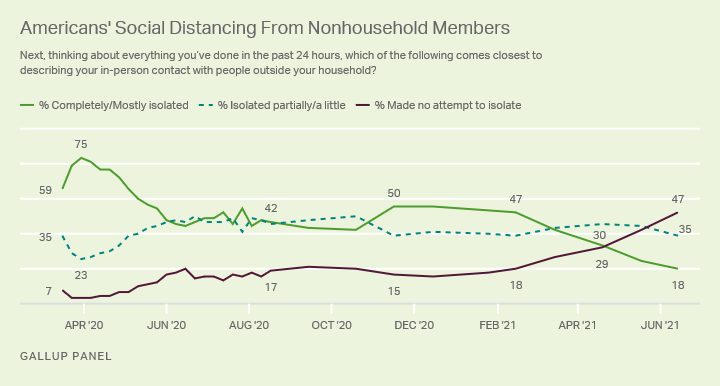
Line graph. Trend from March 2020 to June 2021 in Americans' self-reports of how much they are isolating from nonhousehold members out of concern about the coronavirus. After spiking to 75% in April, the percentage completely or mostly isolated in the past 24 hours fell to below 40% for much of last summer, then rose to closer to 50% from November through February but has since declined and is now 18%.
These findings are from Gallup's June update of its monthly COVID-19 tracking study, conducted by web June 14-20 using the nationally representative Gallup Panel. The same poll found Americans' lives inching back to normal, with 15% saying their life right now is completely back to normal and 62% describing it as somewhat back to normal.
Travel and Entertainment Are the Least Normal
Some aspects of life are rebounding more quickly than others, however, according to a follow-up question asking those whose lives are not completely back to normal to report whether they are normal in each of 12 areas.
Majorities of U.S. adults say their social life (59%) and shopping behaviors (52%) are completely back to normal. Close to half also report that their personal finances (49%) and dining out (45%) habits are restored. These figures include the 15% of Americans who say their lives overall are completely back to normal, plus those who are not completely back to normal generally, but report they are in each specific area.
By contrast, relatively few Americans report that the travel (29%) and entertainment or recreation (30%) aspects of their lives are fully restored to their pre-pandemic norms. Most Americans also have further to go to in the areas of physical health, mental health and exercise, with about four in 10 describing these aspects as completely back to normal.
Parents of children under 18 report different levels of recovery when it comes to parenting and school. While about half (51%) say that their parenting and how they are raising their children are back to normal, only 34% say this about school.
Meanwhile, U.S. workers are about evenly split, with 49% of adults employed full or part time saying that work is completely back to normal for them, but the other half (51%) saying it isn't.
| Jun 2021 | |
|---|---|
| % | |
| Socializing with friends and family | 59 |
| Shopping | 52 |
| Parenting/Raising children (Based on parents of child <18) | 51 |
| Work (Based on those employed full or part time) | 49 |
| Personal finances | 49 |
| Dining out | 45 |
| Physical health | 43 |
| Mental health | 39 |
| Exercise | 39 |
| School (Based on parents of child <18) | 34 |
| Entertainment and recreation | 30 |
| Traveling | 29 |
| Each figure includes the 15% of Americans who say their overall lives are completely back to normal, plus those who are not completely back to normal overall, but report they are back to normal in each specific area. | |
| Gallup Panel, June 14-20, 2021 | |
Americans who do not plan to be vaccinated (24% of adults in the latest survey) are more likely than fully vaccinated adults to report their lives are completely normal in each area. For instance, 75% of nonvaccinated adults versus 55% of vaccinated adults report that socializing with friends and family has returned to normal for them. Similar gaps are seen for most of the activities rated, underscoring nonvaccinated adults' general comfort with rebuffing COVID-19 precautions.
Many Still Avoiding Crowds, Public Transportation
Separately, Gallup also tracks the types of activities U.S. adults are staying away from to avoid contracting or spreading the coronavirus during the pandemic. The latest findings broadly align with the data outlined above.
In June, relatively few adults, just 21%, reported avoiding small gatherings, such as with friends and family, in the previous seven days. Fewer than three in 10 (28%) were steering clear of public places, such as stores or restaurants.
At the same time, significantly larger proportions were avoiding events with large crowds (39%) and traveling by air, bus, subway or train (35%).
While differences persist in what Americans are willing to do, all of these precautionary behaviors have fallen substantially over the past few months after solid majorities of Americans had practiced them for much of the past year.
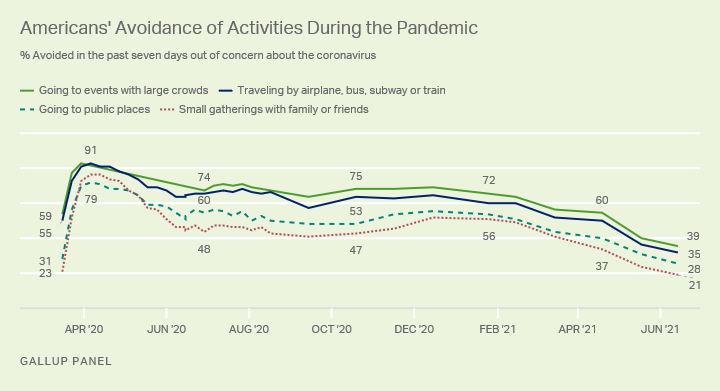
Line graph. Trend from March 2020 to June 2021 in percentages of Americans who report they are avoiding various activities out of concern about contracting or spreading the coronavirus. After spiking to 79% or more in April, the percentages have gradually declined and are now 39% for going to events with large crowds; 35% for traveling by airplane, bus, subway or train; 28% for going to public places; and 21% for attending small gatherings, such as with family or friends.
Reduced Majority Wore Face Mask in Past Week
Meanwhile, Americans' use of face masks when leaving their homes is tapering, with 68% in June reporting they wore one in the previous seven days.
The 11-percentage-point decline in that figure from May follows a seven-point decline in May, shortly after the Centers for Disease Control and Prevention announced on May 13 that Americans who are vaccinated no longer need to wear a mask in most settings. In addition to the confidence this may have given vaccinated Americans about forgoing their masks, it caused many states and businesses to lift mask requirements.
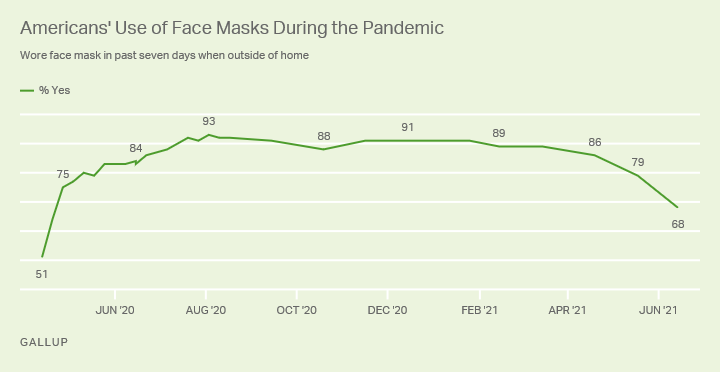
Line graph. Trend from April 2020 to June 2021 in the percentage of Americans who have worn a face mask in the past seven days when leaving their home. The percentage rose from 51% last April to 93% by August and remained at or near 90% through March 2021, but has since declined to 68%.
Use of face masks fell substantially among fully vaccinated Americans this past month, from 90% in May to 77% in June, while declining only slightly among those who are partially vaccinated or plan to be. However, mask wearing also fell, by 11 points to 38%, among those who do not plan to get vaccinated, a group that remains at risk of catching the coronavirus and spreading it to others, particularly as the highly contagious Delta variant takes hold in the U.S.
Longer term, mask-wearing has fallen more sharply among nonvaccinated adults (down 34 points since March) than among those who are fully vaccinated (down 19 points).
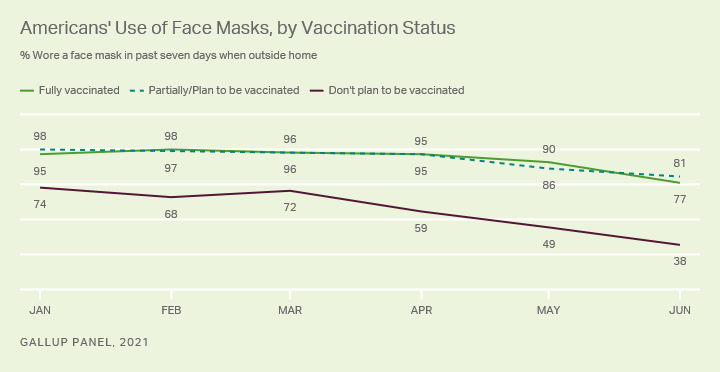
Line graph. Trend from January to June 2021 in Americans' use of face masks by their vaccination status. Americans who are fully or partially vaccinated have been consistently the most likely to report wearing a face mask in past seven days when outside of home, although this has fallen from nearly 100% at start of the year. Now 77% of fully vaccinated and 81% of partially vaccinated adults report wearing a face mask. Those who don't plan to be vaccinated have been the least likely to wear a mask, falling from 74% in January to 38% in June.
Bottom Line
Relatively few Americans are now scrupulously avoiding nonhousehold members because of COVID-19. But as the pandemic remains under improved control, the public is still not rushing back to business as usual. Most Americans are still using face masks in public to some degree, even if they are vaccinated. And while six in 10 say their socializing is back to normal, smaller majorities feel this way about their shopping and parenting activities. Even fewer report normalcy in several other aspects of their lives, particularly travel and recreation.
To stay up to date with the latest Gallup News insights and updates, follow us on Twitter.
Learn more about how the Gallup Panel works.

